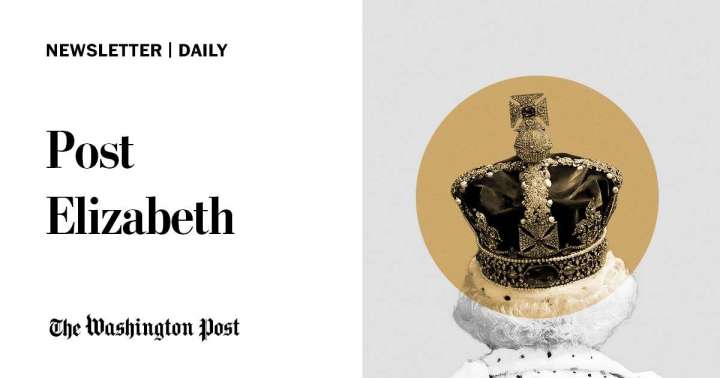You’re reading Post Elizabeth, Opinions’ newsletter following the British monarchy’s transition. Click here to get it in your inbox.
The U.K.’s national mourning period is about more than the queen

Unlike in bygone eras, there is no mandate to mourn (though the U.K. government did issue guidance). There is, of course, ceremony: Monday’s procession and service in Edinburgh, with the late queen’s offspring walking behind her coffin on its way to St. Giles’ Cathedral, was officially the second leg of Elizabeth II’s journey to her final resting place.
Unofficially, there is more to these regimented steps: They honor the last sovereign and set the table for the new one. They are also a mechanism for shared grief — an unfamiliar experience for people who have lost loved ones since the pandemic began.
The people pouring onto streets, milling around royal residences and preparing to stand in line for 22 hours to file past the queen’s coffin are telling journalists a variety of things: They didn’t know the queen but respected her service. They met her once or admired her from afar. She was better than the politicians. These are interpretations of a constant now lost.
Get ready to say “Awwww!”: Prince Louis, youngest son of William and Catherine, the new Prince and Princess of Wales, won over social media again this weekend after a video emerged of his mother telling well-wishers on Saturday how he reacted to news of the queen’s death.
‘Forever grateful’: Prince Harry posted a statement on his Archewell website Monday reflecting on his grandmother and thanking her for, among other things, her sound advice and infectious smile. Harry concluded: “We, too, smile knowing that you and grandpa are reunited now, and both together in peace.”
Don’t miss
Coverage from around The Post
A divided Britain confronts enormous domestic and international challenges, writes chief correspondent Dan Balz — without the unifying presence of the late queen. “If she was a symbol of continuity, the queen could not bring stability to her country,” he argues. Questions about what comes next will shadow the country’s new leadership. (My favorite word in Dan’s piece? “Shambolic.”)
The queen might have stayed above the fray, but her family’s scandals are legendary: Charles and Diana (and Camilla), Prince Andrew and more. Here’s a roundup from reporters Praveena Somasundaram, Reis Thebault and Bryan Pietsch.
Corgi update. Andrew and his ex-wife, Sarah Ferguson, will take two of the late queen’s beloved dogs, write Derek Hawkins and Karla Adam.
Enough with the corgi coverage, suggests Post editorial cartoonist Ann Telnaes.
What’s the difference between a queen and a queen consort? Post staffers answer that and other FAQs here.
A post from ITV News reporter Chris Ship, @chris.ship.royal, who interviewed Princess Anne about her mother
Follow @washingtonpost and @postopinions on Instagram for more news coverage.
Do you have questions about Britain’s royal transition? Submit them here.






